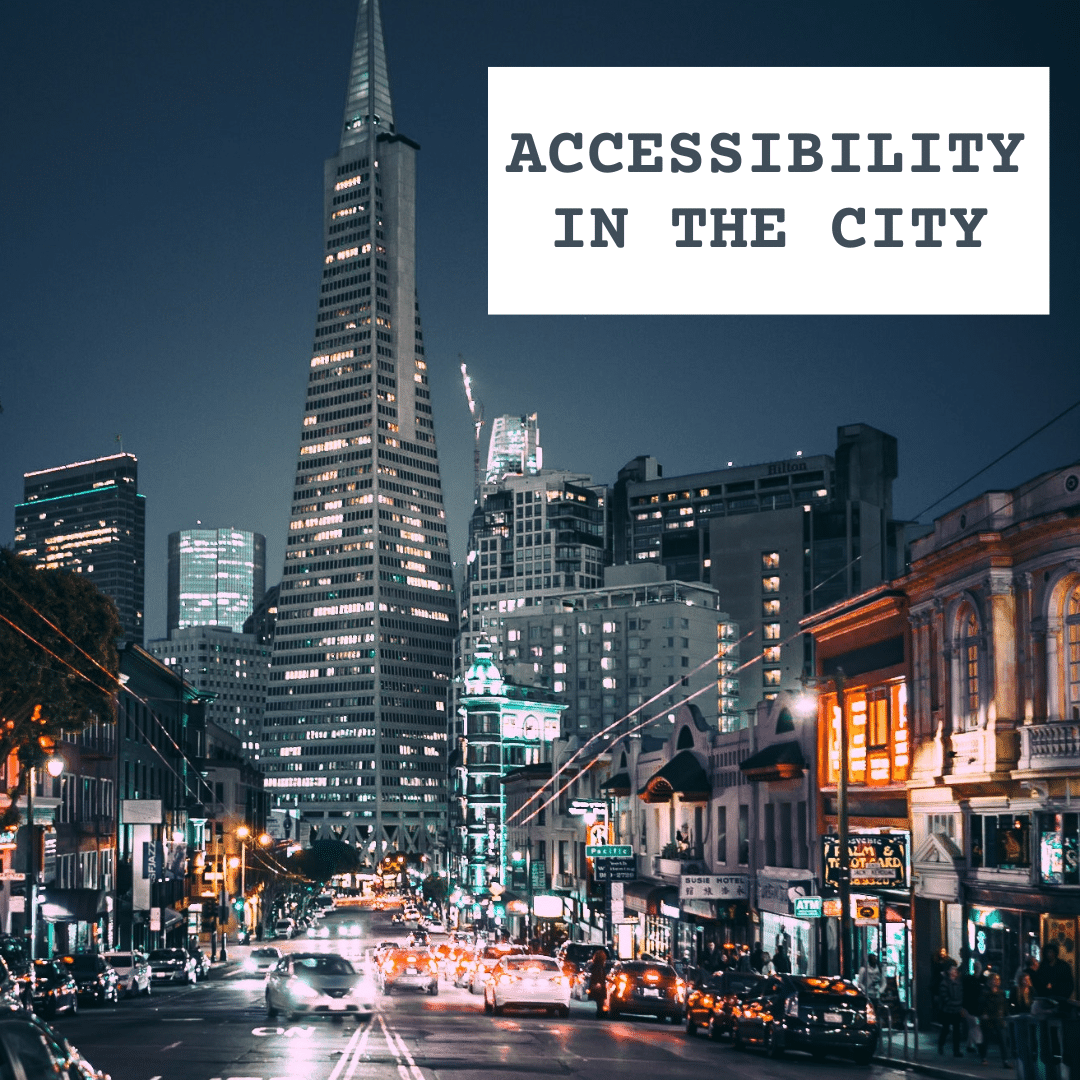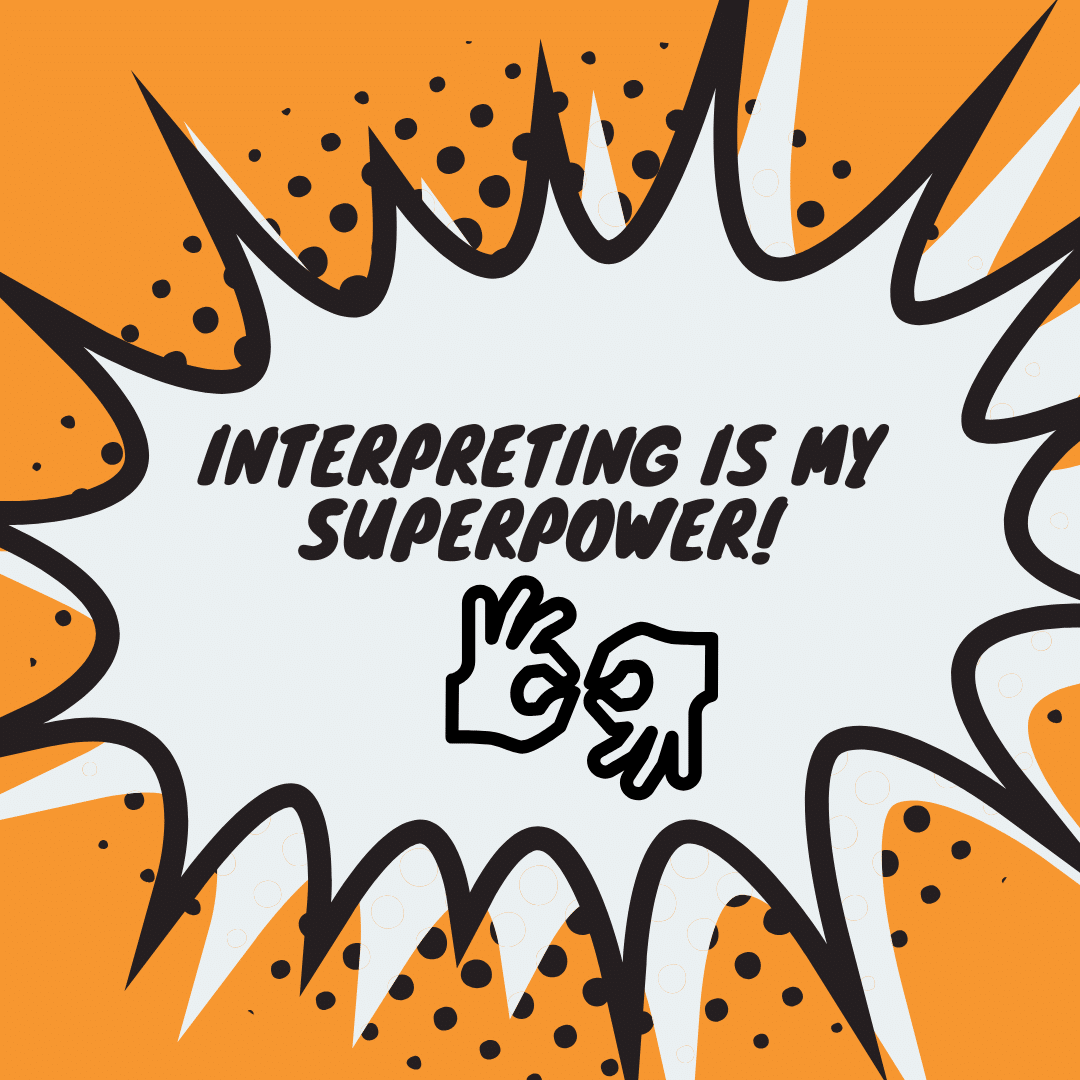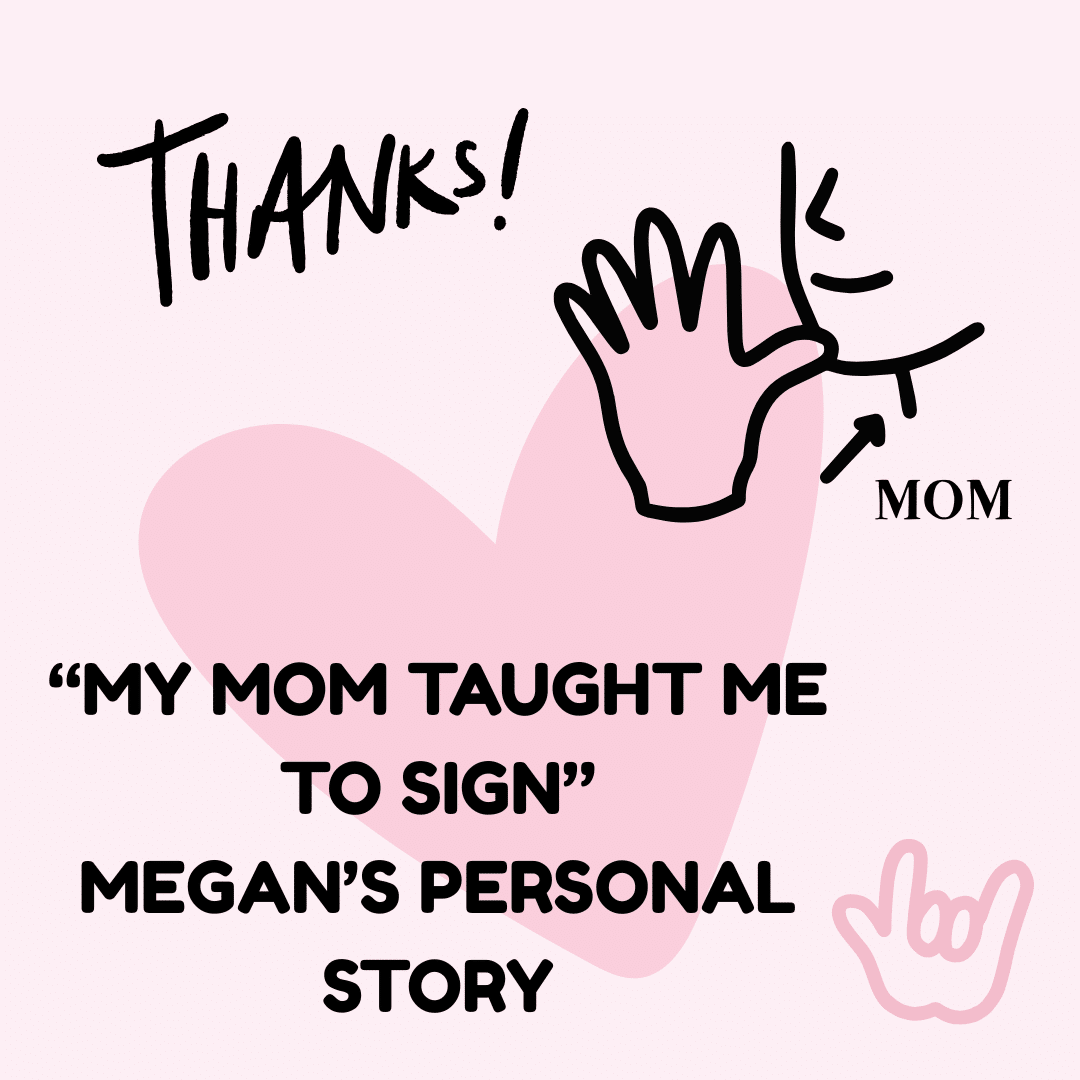
Breaking Barriers: The Power of Learning American Sign Language
- by Dennis Valansi
- No Comments
In today’s diverse workplace, effective communication is more important than ever. As businesses become increasingly global and inclusive, the need to communicate across different languages and cultures has become paramount. With deaf and hard-of-hearing individuals being an integral part of many teams, learning American Sign Language (ASL) can help bridge the communication gap and foster a more inclusive environment. In this article, we’ll explore the benefits of learning ASL, provide basic sign language tips, and discuss how it can enhance collaboration with your deaf coworkers. By embracing ASL, you not only enhance communication but also contribute to a culture of respect and inclusivity.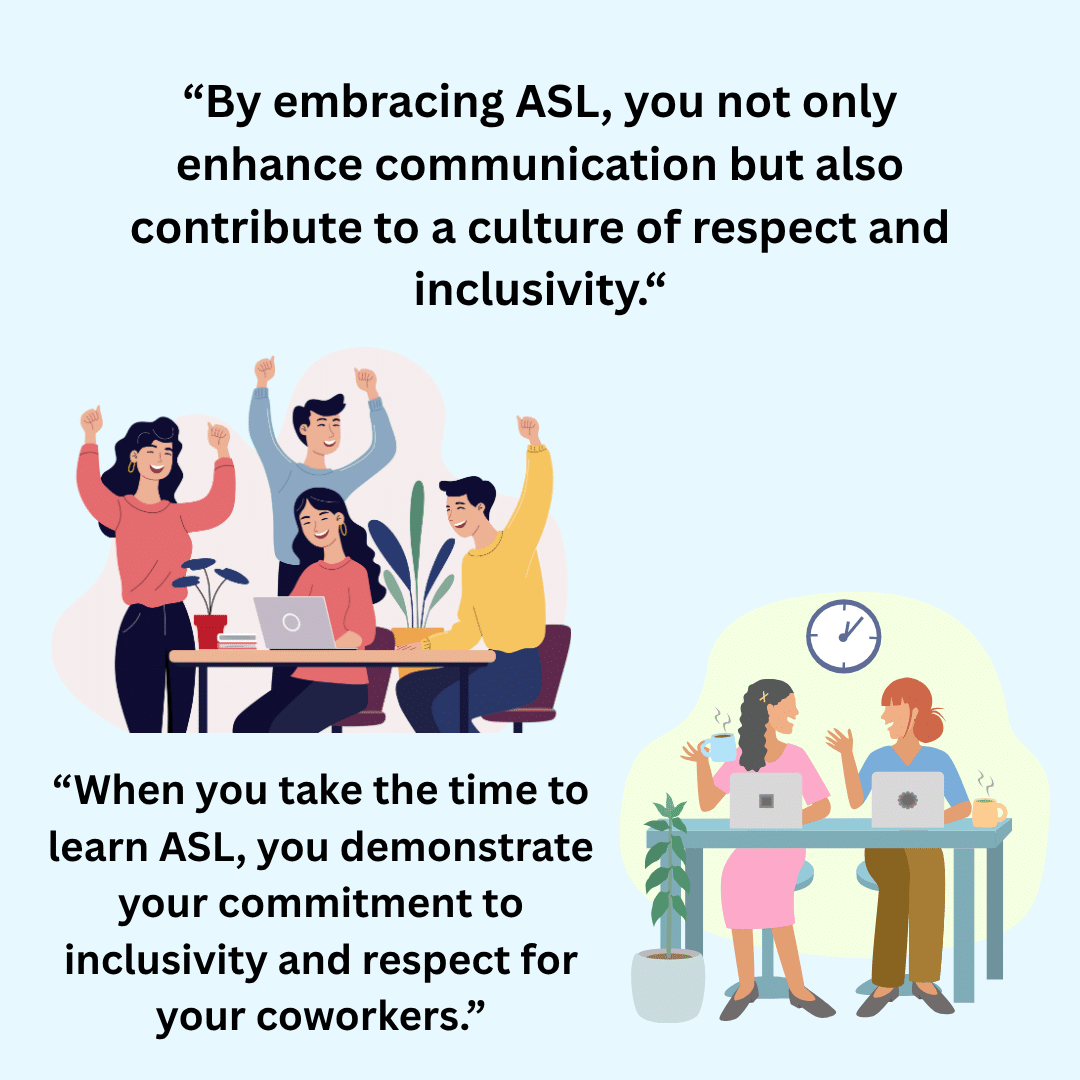
Why Learning ASL is Important
American Sign Language is a complete, natural language with its own grammar and syntax. Unlike spoken languages, ASL relies on visual gestures and facial expressions, offering a unique way of communication that is both expressive and efficient. By learning ASL, you not only gain the ability to communicate more effectively with deaf coworkers but also show respect and inclusivity. Here are a few reasons why learning ASL is beneficial:
No More Barriers
Communication barriers can hinder productivity and create misunderstandings within a team. These barriers can lead to feelings of isolation and frustration for deaf employees, impacting their ability to contribute effectively. By learning ASL, you break down these barriers, ensuring that everyone can contribute and collaborate effectively. This leads to a more harmonious and productive work environment where all voices are heard and valued.
Enhancing Professional Relationships
When you take the time to learn ASL, you demonstrate your commitment to inclusivity and respect for your coworkers. This effort can strengthen professional relationships, build trust, and improve team dynamics. When colleagues see your dedication to learning their language, they are more likely to engage with you openly, fostering a culture of mutual understanding and respect. This not only benefits your relationships with deaf coworkers but also sets a positive example for the rest of the team.
Expanding Your Skill Set
Learning a new language is always a valuable skill. ASL is no exception. It not only enhances your professional capabilities but also opens doors to new opportunities and experiences in both your personal and professional life. Mastering ASL can enhance your cognitive abilities, improve your multitasking skills, and even boost your cultural awareness. Moreover, it positions you as a valuable asset in any organization committed to diversity and inclusion, potentially opening up career advancement opportunities.
Getting Started with ASL
If you’re new to sign language, don’t worry! Getting started with ASL is easier than you might think. With the right resources and a commitment to learning, you can quickly begin to communicate effectively in ASL. Here are some steps to help you begin your journey:
Sign Language Basics
Start with the basics by learning the ASL alphabet. This will help you finger spell words and names, which is a fundamental aspect of ASL. Understanding the alphabet is crucial, as it forms the foundation for more complex communication. Once you’re comfortable with the alphabet, move on to common phrases and expressions used in everyday conversations. These basic signs will enable you to greet your coworkers, ask simple questions, and engage in basic conversations.
Practice Regularly
Consistency is key when learning any new language. Set aside time each day to practice your ASL skills. Regular practice helps reinforce what you’ve learned and builds your confidence. You can use online resources, join local ASL classes, or even practice with your deaf coworkers. The more you practice, the more confident you’ll become. Engaging with others who are also learning ASL can provide motivation and support, making your learning journey more enjoyable.
Use Online Resources
There are numerous online platforms and apps dedicated to teaching ASL. Websites like Lifeprint, ASL University, and apps like SignSchool provide comprehensive lessons, videos, and exercises to help you master ASL at your own pace. These resources offer flexibility, allowing you to learn whenever and wherever you choose. Additionally, many of these platforms include community forums where you can connect with other learners, share experiences, and seek advice.
Engaging with Deaf Coworkers
Once you’ve started learning ASL, it’s important to engage with your deaf coworkers in a meaningful way. Effective engagement requires more than just language skills; it involves empathy, patience, and a genuine interest in understanding your colleagues’ perspectives. Here are some tips to enhance communication and collaboration:
Be Patient and Respectful
Communication in ASL might be slower at first as you learn. Be patient with yourself and your coworkers. It’s important to recognize that learning a new language takes time, and mistakes are part of the process. Remember, respect is key. Allow your coworkers the time they need to express themselves, and don’t interrupt or rush the conversation. This patience fosters a supportive environment where everyone feels valued and heard.
Encourage a Deaf-Friendly Workplace
Advocate for a workplace that supports deaf and hard-of-hearing employees. This can include providing interpreters for meetings, using visual aids in presentations, and ensuring that all communication tools are accessible to everyone. Promoting accessibility shows that your organization values diversity and is committed to creating an inclusive environment. Additionally, consider organizing workshops or training sessions on deaf culture and ASL for the entire team to enhance understanding and collaboration.
Foster Inclusivity
Inclusivity goes beyond just learning ASL. Encourage your entire team to embrace diversity and make efforts to learn about deaf culture and the unique experiences of deaf individuals. This creates a more cohesive and supportive work environment. By fostering a culture of inclusivity, you help break down stereotypes and misconceptions about deafness, allowing for more meaningful interactions and collaborations. Encourage open dialogue and continuous learning to keep inclusivity at the forefront of your workplace culture.
Real-Life Success Stories
Many organizations have successfully integrated ASL into their workplace culture, leading to improved communication and collaboration. These success stories highlight the positive impact of inclusivity on both employee satisfaction and organizational performance. For example, companies like Starbucks have opened “Signing Stores,” where all employees are proficient in ASL, creating an inclusive space for both employees and customers. These initiatives not only enhance customer service but also demonstrate the company’s commitment to accessibility and inclusion.
Tips from Experienced ASL Learners
Start Small: Begin with simple signs and phrases, then gradually expand your vocabulary. Focusing on small, manageable goals helps build confidence and prevents feeling overwhelmed.
Practice with Others: Engage with fellow learners or deaf individuals to practice and improve your skills. Real-world practice is invaluable for reinforcing what you’ve learned and gaining new insights.
Be Consistent: Dedicate regular time to learning and practicing ASL. Consistency helps solidify your knowledge and keeps you motivated.
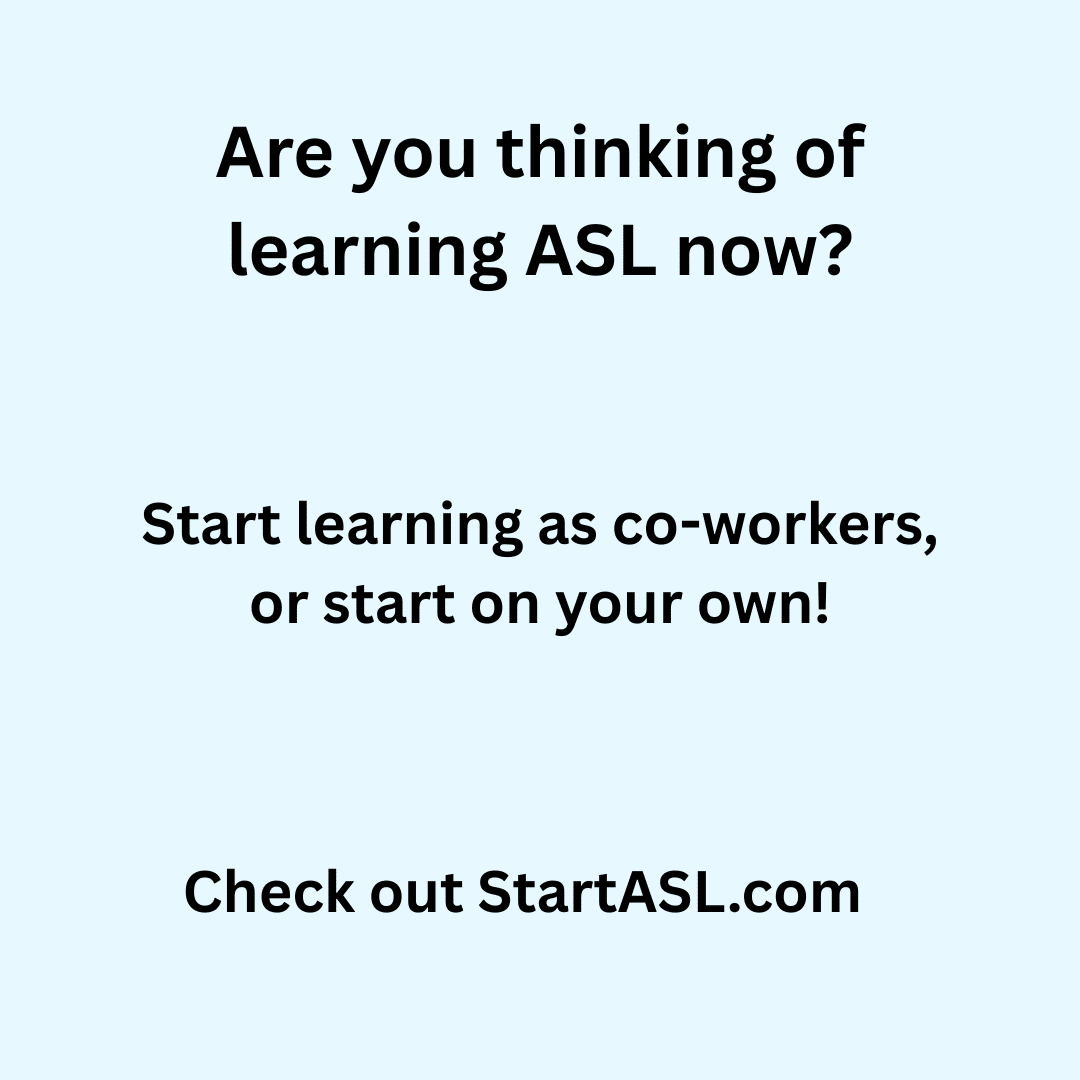
Stay Open to Feedback: Embrace constructive feedback from deaf coworkers to enhance your communication skills. Feedback is a valuable tool for growth and improvement, helping you become a more effective communicator.
Conclusion
Learning ASL is a powerful step towards bridging the communication gap with your deaf coworkers. It not only enhances workplace inclusivity but also enriches your personal and professional life. By breaking down barriers and fostering understanding, you contribute to a more cohesive and productive team environment. Start your ASL journey today and experience the benefits of no more barriers in communication. Embracing ASL is a commitment to continuous learning and growth, both personally and within your organization.
By investing time and effort into learning ASL, you demonstrate a commitment to inclusivity and respect for all team members. This dedication not only benefits your deaf coworkers but also enriches the entire workplace culture. So why wait? Embrace the opportunity to connect with your deaf coworkers and create a more inclusive workplace for everyone. Whether you’re just beginning or are well on your way, your efforts in learning ASL can make a significant difference in promoting a more understanding and collaborative work environment.


